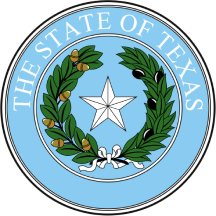Officials in Central Texas had prior knowledge of the severe flooding risks that led to the deadly July 4 floods, according to documents obtained through a public records request. The Upper Guadalupe River Authority (UGRA) highlighted the area's vulnerability in a grant application submitted last year.
The application noted that Kerr County and the surrounding Hill Country are more susceptible to flash flooding than many other regions in the United States. This area is often referred to as Flash Flood Alley due to its steep terrain, shallow soil, and high rainfall rates. The UGRA warned that heavy rains can quickly create fast-moving walls of water with significant destructive potential.
In light of these risks, the UGRA sought $1 million in funding from the Flood Infrastructure Fund to implement a project called the "Kerr County Flood Warning System." The documents revealed that more than 130 people lost their lives in the Texas Hill Country due to the flooding last month. The UGRA's application referenced a long history of flooding in the region, stating that since 1932, approximately 35 lives have been lost in floods in Kerr County, many of which involved vehicles attempting to navigate flooded roads.
The UGRA's proposal for the flood warning system was based on recommendations made by engineers following a fatal flood in 2016. The application pointed out that Bexar County, which includes San Antonio, already had similar technology in place. The proposed system aimed to provide mass notifications to residents and visitors about high water levels and hazardous road conditions throughout Kerr County. It included plans for high water detection systems at ten low water crossings, with each system featuring a master gauging station that would transmit data to local agencies.
However, in October 2024, the UGRA decided not to pursue further funding from the Flood Infrastructure Fund. Executive Director Tara Bushnoe stated that the project would only qualify for a 5% grant. She emphasized the area's vulnerability, saying, "Kerr County’s topography, shallow soils, and history of unusually high rainfall rates make our area vulnerable to flash floods."
Bushnoe added that the UGRA and its community partners are committed to enhancing flood monitoring, detecting hazardous road conditions, and notifying residents. They plan to continue exploring options for implementing a flood warning system and seeking financial assistance.
In a separate development, the UGRA entered into an agreement with a company called Kisters to create a flood warning system. This system was intended to include a centralized dashboard for local flood monitoring and emergency response. The agreement, signed just one month before the July 4 floods, outlined a project cost of $58,375 for labor and an additional $14,600 for one year of software. A kick-off meeting was scheduled for mid-July but was postponed due to the flooding.

 Local News in Texas
Local News in Texas

 Local News in North Carolina
Local News in North Carolina LiveNOW from FOX Crime
LiveNOW from FOX Crime NBC News
NBC News CNN
CNN Santa Maria Times Local
Santa Maria Times Local The Denver Post
The Denver Post Rawlins Daily Times
Rawlins Daily Times Raw Story
Raw Story The Outer Banks Voice Community
The Outer Banks Voice Community